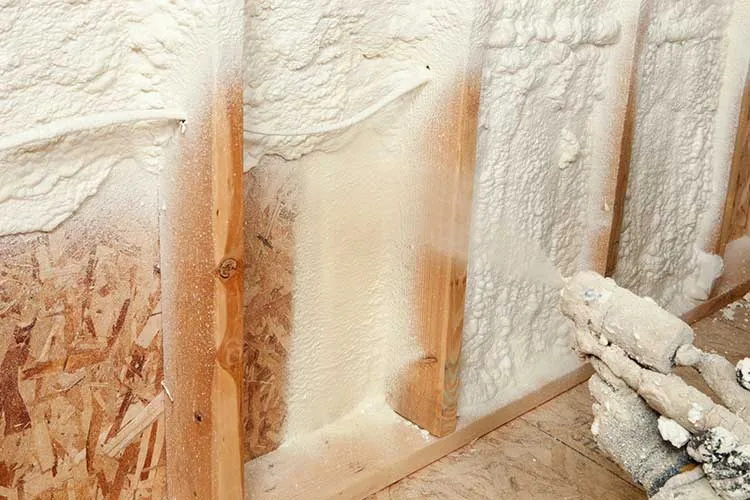
Spray foam insulation in Seattle is expected to cost between $2.75 and $7.00 per square foot in 2025, depending on factors like the type of foam, home size, and installation complexity. For a standard 2,000-square-foot home, total project costs typically range from $5,500 to $14,000.
At Cascadia Spray Foam of Seattle, we specialize in energy-efficient solutions tailored to the Pacific Northwest climate. Whether you’re insulating a crawl space, attic, or full home, understanding costs upfront helps you make smarter decisions that save money in the long run.
This guide breaks down 2025 spray foam costs, what influences pricing, and how to get the best value for your investment.
Seattle homeowners choose spray foam not just for insulation but for lasting energy savings, moisture control, and boosted home comfort year-round. While upfront costs are higher than fiberglass or cellulose, spray foam can reduce energy bills by 20-40% over time.
Two Main Types of Spray Foam:
| Area of Home | Open-Cell Cost (Est.) | Closed-Cell Cost (Est.) |
|---|---|---|
| Attic (1,000 sq ft) | $2,750 – $4,500 | $4,500 – $7,000 |
| Crawl Space (600 sq ft) | $1,650 – $2,700 | $2,700 – $4,200 |
| Walls (per sq ft) | $2.75 – $4.00 | $4.50 – $6.50 |
| Garage (500 sq ft) | $1,375 – $2,250 | $2,250 – $3,500 |
Note: These figures reflect local labor, 2025 material pricing trends, and common Seattle home configurations.
Closed-cell costs more per inch but delivers higher R-values and moisture barriers essential for Seattle’s wet climate.
Hard-to-reach places (like narrow crawl spaces or steep attic slopes) may increase labor costs due to prep time and safety gear.
Larger projects can qualify for bulk rate discounts, while small one-off jobs might have minimum service charges.
Homes with older construction, knob-and-tube wiring, or prior insulation layers may require removal, affecting pricing.
Ask about local energy rebates! Seattle City Light and Puget Sound Energy often offer incentives up to $500+ for qualifying spray foam upgrades.
| Spray Foam Type | R-Value per Inch | Permeability | Application Best For |
|---|---|---|---|
| Open-Cell | ~3.6 | High | Attics, interior walls |
| Closed-Cell | ~6.0–7.0 | Low | Crawl spaces, basements, garages |
R-Value: A measure of thermal resistance the higher, the better the insulation.
Before diving in, here are key steps Seattle homeowners should take:
| Insulation Type | Cost per sq ft | R-Value (per inch) | Lifespan | Moisture Resistance |
|---|---|---|---|---|
| Fiberglass | $0.90 – $1.20 | ~2.5 – 3.2 | 10–25 years | Low |
| Cellulose | $1.00 – $1.50 | ~3.2 – 3.8 | 20–30 years | Medium |
| Spray Foam | $2.75 – $7.00 | ~3.6 – 7.0 | 30–80 years | High |
The right insulation pays for itself. Whether you’re building new or upgrading an old home, spray foam offers Seattle’s most efficient path to comfort, savings, and moisture control.
Schedule your insulation assessment with Cascadia Spray Foam of Seattle. We’ll guide you through every step from rebate checks to expert installation. Contact Us
(425) 386-3500
[email protected]
Yes. While upfront costs are higher, energy savings and reduced maintenance pay off within 3–5 years. See our comparison table.
Properly installed, spray foam can last up to 80 years without sagging or settling. Learn more in our Technical Specs.
Absolutely many Seattle homeowners start with crawl spaces or attics. Our Pricing Breakdown shows typical costs by area.
Yes, after curing (24–48 hours). We ensure ventilation and safety throughout the process.
Lead times vary seasonally, but we often book within 1–2 weeks. Contact us for exact availability.